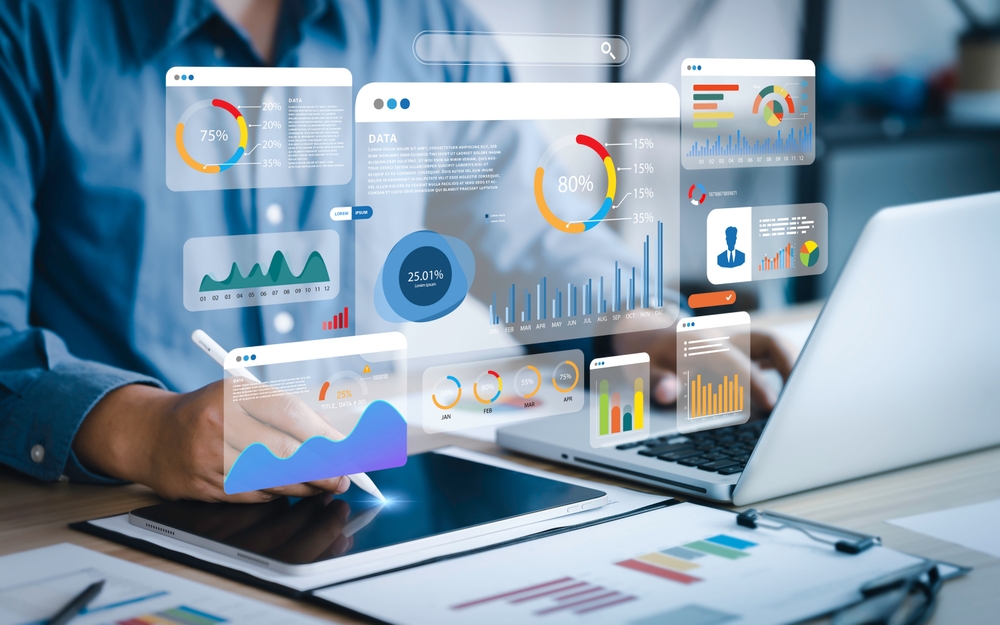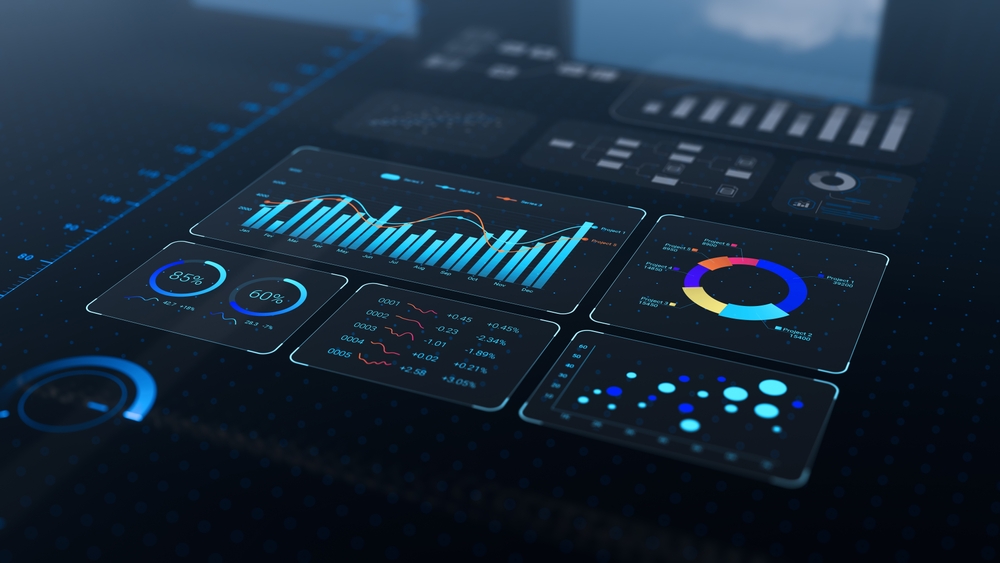The Essence of Business Intelligence: A Comprehensive Overview
Business intelligence (BI) has become an essential tool for organizations seeking to make informed decisions and achieve sustainable growth. At its core, BI is a technology-driven process that involves collecting, analyzing, and transforming data into actionable insights to guide both strategic and tactical decisions. This comprehensive approach allows businesses to access valuable information from internal IT systems and external sources, turning raw data into dashboards, visualizations, and reports that empower decision-makers at all levels.¹
The key objective of BI is to drive improved business outcomes. By leveraging advanced analytics, predictive modeling, and interactive dashboards, BI tools convert complex data into understandable and actionable formats. By integrating various data streams—such as sales performance, ecommerce metrics, and customer behavior—into a unified view, businesses can optimize operations, enhance customer experiences, and ultimately increase profitability.²
Additionally, modern BI represents a significant leap from its traditional origins. Once a tool primarily used to disseminate information across organizations, BI has evolved into a dynamic platform that enables businesses to swiftly adapt to market changes, eliminate inefficiencies, and maintain a competitive edge. Today’s BI solutions prioritize self-service analysis, governed data management, and rapid insights, making them indispensable for modern organizations.³
This underscores the critical role BI plays in helping organizations navigate the complexities of today’s data-driven business environment.

The Benefits of Business Intelligence
Business intelligence (BI) empowers decision-makers with clear, precise insights, which are crucial for informed decision-making. This foundational benefit of BI translates into numerous other advantages, such as gaining a competitive edge, optimizing business operations, and more. Here are some key benefits explained in detail.
Data-Driven Decision Making
BI tools allow organizations to analyze both historical and real-time data from various sources, facilitating data-driven decision-making. With advanced analytics and data visualization, users can uncover trends and patterns that might otherwise remain hidden. This enables businesses to rely on BI for answering critical questions and shaping their strategic direction.
Enhanced Operational Efficiency
By leveraging BI’s data analysis capabilities, organizations can identify and address operational inefficiencies. Whether it’s improving inventory management or understanding customer behavior, BI contributes to more efficient operations. Self-service BI tools further empower all employees, regardless of their data expertise, to explore and utilize data effectively, streamlining overall business processes.
Improved Customer Experience
BI helps businesses better understand their customers through data mining and predictive analytics. By gaining insights into customer preferences and behaviors, companies can tailor their offerings to meet customer needs more effectively, leading to higher satisfaction levels. For instance, if a retailer notices a trend of abandoned carts containing specific items, they can proactively send targeted promotions to encourage completion of those purchases.
Optimized Supply Chain Management
BI simplifies data preparation and uses advanced analytics to identify inefficiencies in the supply chain. By utilizing tools like online analytical processing and data visualization, businesses can gain better visibility into their supply chain operations, making it easier to adapt to market changes and demand fluctuations. For example, retailers can use BI to visualize inventory flow, helping them manage orders more effectively and keep track of supply chain dynamics. ²

Types of Business Intelligence
Business intelligence (BI) manifests in various forms, each designed to meet specific business needs and technological environments. Choosing the right type of BI for your organization can significantly enhance data utilization and provide clarity in decision-making.
Traditional BI Systems
Traditional BI systems are comprehensive but often complex and costly, making them ideal for larger organizations with the resources to employ IT professionals who can manage the setup and maintenance. These systems excel in handling vast amounts of structured data and seamlessly integrating with other enterprise systems.¹
Self-Service BI
Self-service BI tools empower business users to generate reports and dashboards independently, without relying on IT support. This type of BI is generally more affordable and provides quick insights into business questions, making it particularly suitable for smaller businesses or departments within larger organizations that require agility.¹
Cloud-Based BI
Cloud-based BI solutions offer the flexibility of remote data access and eliminate the need for on-premise hardware, reducing overall costs. These solutions are scalable and can be implemented swiftly, making them a versatile option for businesses of all sizes.²
Mobile BI
Mobile BI enables access to business intelligence applications and dashboards on smartphones and tablets, facilitating real-time decision-making from virtually anywhere. Designed for ease of use, mobile BI tools typically feature streamlined dashboards that display key metrics and visualizations optimized for smaller screens.¹
Real-Time BI
Real-time BI processes data as it is generated, providing an up-to-date view of business operations, customer behavior, and market conditions. This type of BI is essential for applications that require immediate decision-making, such as credit scoring, stock trading, and targeted promotions.¹
Operational Intelligence (OI)
Operational intelligence, or operational BI, delivers real-time analytics directly to managers and frontline workers, aiding in swift decision-making during business operations. OI tools help address immediate issues, such as resolving customer service problems or managing distribution logistics, enabling faster and more informed responses.¹
Software-as-a-Service (SaaS) BI
SaaS BI utilizes cloud computing systems hosted by vendors to deliver data analysis capabilities through a subscription-based service. Also known as cloud BI, this model often supports multi-cloud environments, allowing organizations to deploy BI tools across different cloud platforms, minimizing the risk of vendor lock-in.¹
Open Source BI (OSBI)
Open source BI offers both free community editions and subscription-based commercial versions with vendor support. These tools provide flexibility by allowing BI teams to access and modify source code for development purposes. Some proprietary BI vendors also offer free versions of their software, primarily targeted at individual users.¹
Embedded BI
Embedded BI integrates BI and data visualization features directly into business applications, enabling users to analyze data within the tools they use daily. This integration allows for seamless data analysis without the need to switch between applications, increasing efficiency and usability.¹
Collaborative BI
Collaborative BI is a process that combines BI applications with collaboration tools, enabling users to work together on data analysis and share insights. This approach often involves the use of online chat, discussion tools, and annotation features to facilitate communication and collective decision-making.¹
Location Intelligence (LI)
Location intelligence is a specialized form of BI that focuses on analyzing geospatial data, offering insights through map-based visualizations. LI is particularly useful for applications such as site selection, location-based marketing, and logistics management, where geographic factors play a critical role.¹
By understanding the different types of business intelligence available, organizations can better tailor their BI strategy to meet their unique needs and technological landscape, ensuring that they harness the full potential of their data

Developing a Business Intelligence Strategy
Creating a robust business intelligence (BI) strategy is essential for retailers aiming to maximize the value of their data and convert it into actionable insights. This process typically involves five critical steps, each designed to ensure that your BI tools effectively meet your business needs.
Define Business Objectives and KPIs
Before beginning data analysis, it’s crucial to set clear business objectives and identify key performance indicators (KPIs). Understanding what you want to achieve allows you to focus on the most relevant data. Whether your goal is to analyze sales and delivery metrics or enhance customer satisfaction, these KPIs act as a guide for your BI strategy.
Choose the Right BI Tools and Platforms
With a wide array of BI platforms and tools available, selecting the right ones is key. Some tools are designed for advanced data science, emphasizing complex analysis and predictive modeling, while others are more suited to descriptive analytics, which focuses on interpreting past data to identify trends. It’s important to choose tools that integrate well with your existing systems. Consulting with BI vendors can provide valuable insights into which tools may best fulfill your requirements.
Collect and Prepare Your Data
The foundation of a strong BI strategy is high-quality data. Typically, business intelligence developers will create a data warehouse for centralized data storage, streamlining the collection process to include sales data, customer interactions, and inventory information. Preparing this data for analysis often involves cleaning it to remove inconsistencies and filling in any gaps to ensure that the subsequent analysis is both accurate and reliable.
Perform Data Analysis
With the data warehouse and BI platforms in place, the next step is to conduct data analysis. Depending on your specific objectives, this may involve a variety of activities, from identifying patterns in historical data to applying data science methods for predictive analytics. BI analysts and developers collaborate to thoroughly examine the data, extracting valuable business insights.
Implement an Iterative Review Process
Developing a BI strategy is an ongoing process that requires continuous refinement. Based on the insights gained from your analyses, you may need to adjust your business objectives, KPIs, or even your data collection techniques. An iterative approach ensures that your BI strategy remains aligned with organizational goals and leverages the latest tactics and technologies.
Conclusion
Business intelligence (BI) is a vital tool for organizations looking to thrive in today’s data-driven environment. By turning data into actionable insights, BI helps businesses make informed decisions that enhance growth, efficiency, and customer satisfaction.
To succeed with BI, companies must clearly define their objectives, select the right tools, prepare and analyze their data, and continually refine their strategies. This approach ensures that BI insights align with business goals and adapt to changing market conditions.
In summary, effectively leveraging BI allows businesses to stay competitive, identify opportunities, and make confident, data-driven decisions, positioning them for long-term success in a rapidly evolving landscape.
- ¹ Stedman, C. (2024). Business intelligence (BI). TechTarget. Retrieved from https://www.techtarget.com/searchbusinessanalytics/definition/business-intelligence-BI
- ² Gardner, K. (2024). What is business intelligence? Shopify. Retrieved from https://www.shopify.com/ca/enterprise/blog/business-intelligence
- ³ Tableau. (2024). What is business intelligence? Tableau. Retrieved from https://www.tableau.com/learn/articles/business-intelligence
If you have questions or need assistance executing these strategies, our team is available at hello@tidalcommerce.ca.


